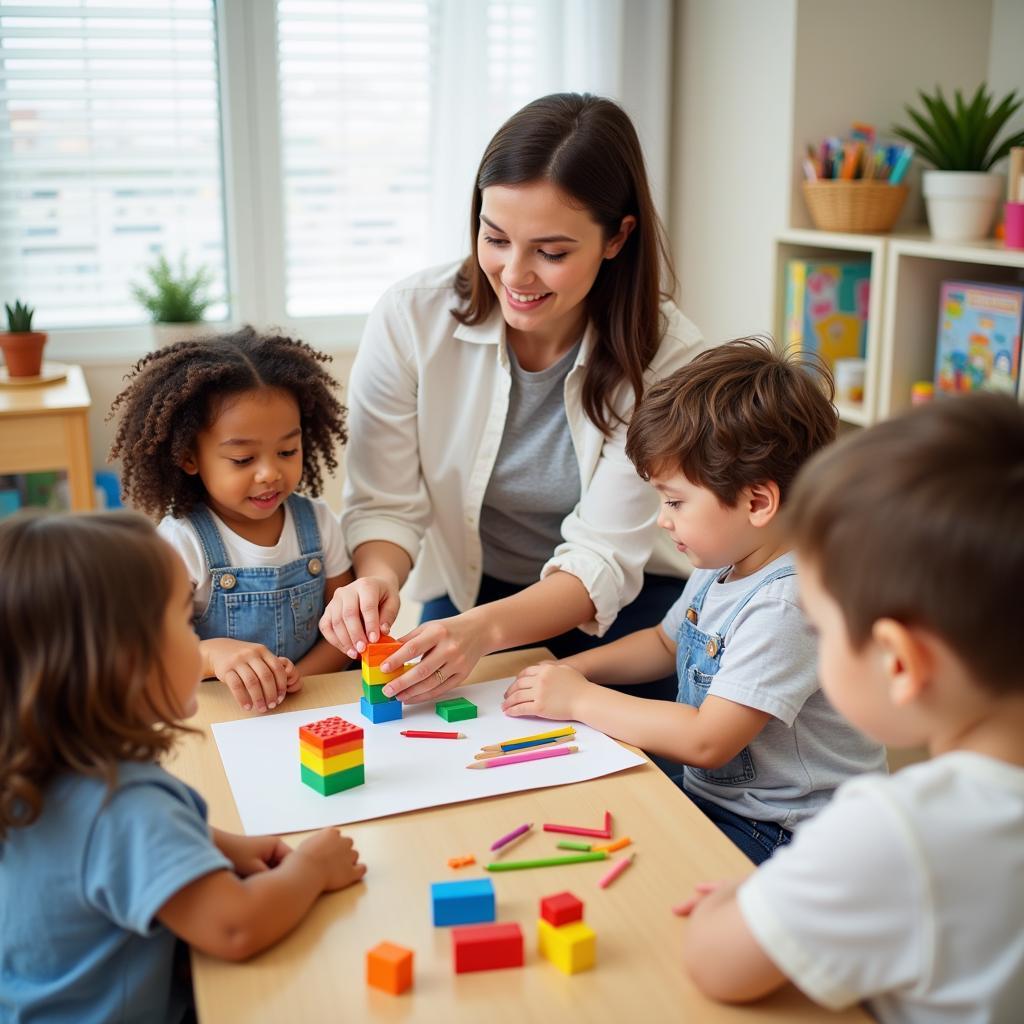“Bend the tree when it is young, teach the child when they are little.” This proverb affirms the importance of early childhood education, especially the application of personalized learning principles in teaching children. So, what is personalized learning in preschool education, and how can it be effectively implemented? Similar to communication skills of preschool teachers, this principle requires the teacher’s ingenuity and sensitivity.
Personalized Learning in Preschool: Concept and Significance
Personalized learning in preschool education is the organization of educational activities to suit the individual characteristics, abilities, and needs of each child. It’s not about treating everyone the same, but about “sowing seeds” in the right way so that each “seedling” can develop best. Ms. Nguyen Thi Lan, a leading early childhood education expert in Vietnam, emphasized in her book “Nurturing Children’s Souls”: “Each child is a unique individual, with their own potential and qualities. Applying the principle of personalized learning will help unlock those potentials and create conditions for children to develop comprehensively.”
 A preschool teacher is interacting with a group of young children in a classroom setting, demonstrating personalized attention and care.
A preschool teacher is interacting with a group of young children in a classroom setting, demonstrating personalized attention and care.
How to Implement Personalized Learning Principles?
Applying personalized learning principles is not easy, but it’s not an impossible task either. It requires keen observation, patience, and love from the teacher. To better understand life skills in early childhood education, you can refer to this link. Here are some suggestions:
Observe and Understand Children
Spend time observing each child, understanding their interests, personalities, strengths, and weaknesses. Some children like to draw, some like to sing, and some like to play physical activities. Grasping these characteristics will help teachers design appropriate activities.
Be Flexible in Teaching Methods
Do not apply a rigid method to all children. With shy children, encouragement and motivation are needed. With active children, create more exploratory activities.
 A preschool teacher is guiding a child in a drawing activity, showcasing a personalized teaching approach based on the child's interest.
A preschool teacher is guiding a child in a drawing activity, showcasing a personalized teaching approach based on the child's interest.
Create a Diverse Learning Environment
The learning environment needs to be designed to meet the diverse needs of children. There should be enough toys, learning materials, and space for different activities. Don’t forget the importance of secret door games for preschoolers, an activity that stimulates children’s curiosity and creativity.
Coordinate with Parents
The coordination between family and school is extremely important. Teachers need to regularly communicate with parents about their child’s learning and development to have the best companionship and support. Mr. Pham Van Hung, an educational psychology expert, once shared: “Educating children is not only the responsibility of the school but also the responsibility of the family and society.”
Applying technology in personalized education.
The application of technology makes it easier for teachers to personalize education. For example, teachers can use online learning applications, educational games on computers or tablets to help children learn at their own pace and interests. This has similarities with male preschool teachers when male teachers often tend to apply technology to teaching.
Conclusion
Personalized learning in preschool education is the key to “unlocking” the potential of each child. With love, patience, and appropriate methods, we can help them develop comprehensively in terms of physical, intellectual, and emotional aspects. Let’s work together to build a “favorable weather” early childhood education environment so that every child can “bloom.” Leave a comment and share this article if you find it helpful. Explore more content on the “TUỔI THƠ” website for more useful knowledge about early childhood education. Contact us at 0372999999 or visit us at 234 Hao Nam, Hanoi. We have a 24/7 customer care team.